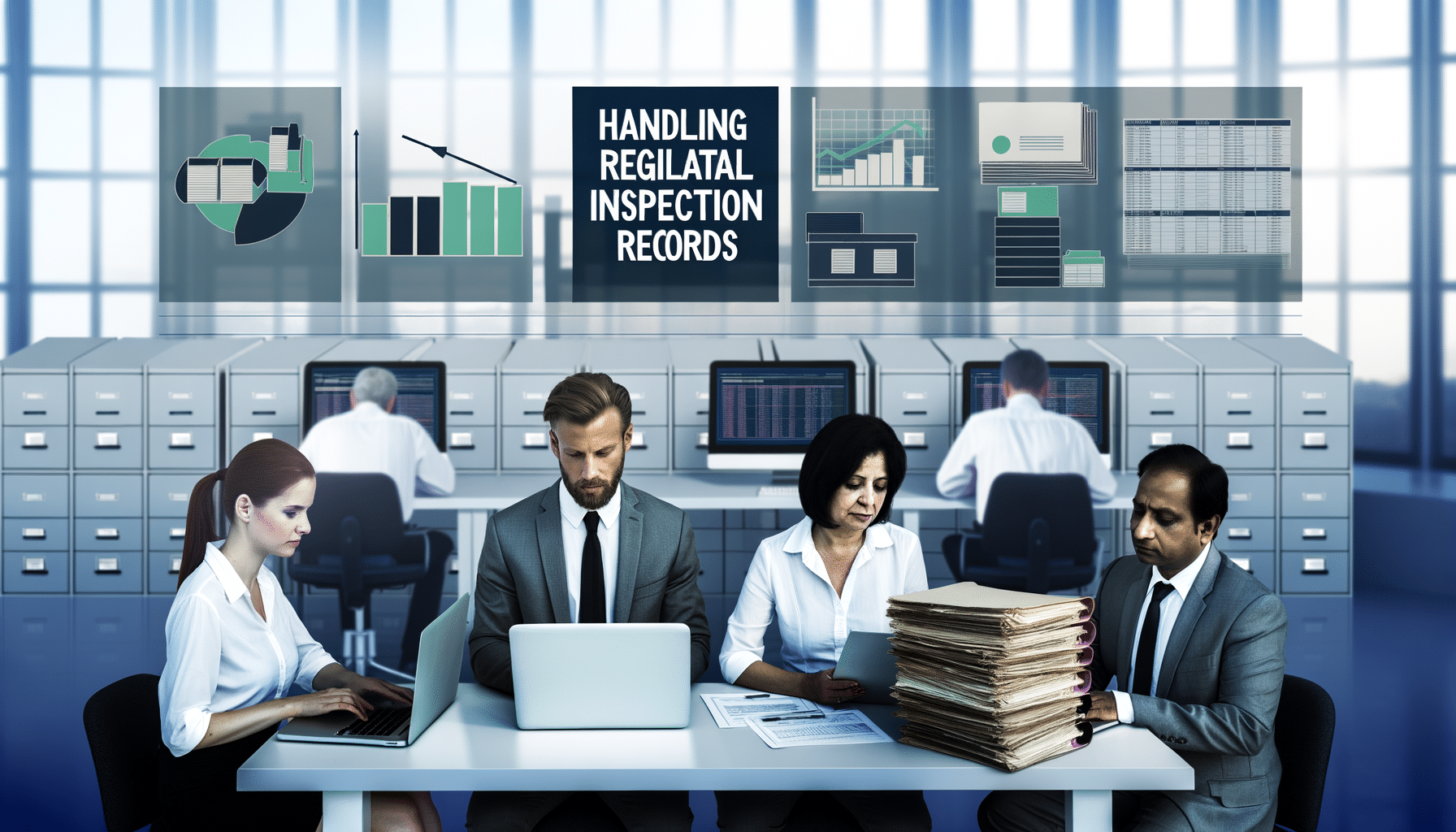- Blockchain Compliance
- November 16, 2024
Solving Cross-Border Data Transfer Issues

In today’s interconnected business landscape, data flows effortlessly across the globe, fuelling innovation and shaping international strategies. However, the seamless transfer of data across borders isn’t a walk in the park—it comes with a medley of legal, security, and compliance challenges. These hurdles can truly make cross-border data transfers a daunting task for any compliance, legal, or finance professional. I’ve stood at this crossroads many times, facing the challenges head-on through our work with RecordsKeeper.AI. Here’s how we’ve tackled these complexities, utilizing cutting-edge technologies like blockchain and artificial intelligence to facilitate smooth cross-border data transfer.
Understanding the Complexities of Cross-Border Data Transfers
Managing cross-border data transfers isn’t just about sending data from one place to another. It involves adhering to a myriad of regulations such as GDPR, CCPA, and other data protection laws that vary widely from one jurisdiction to another. The first step in navigating this complex landscape is shedding light on the types of issues we face. Non-compliance with regulations can lead to severe penalties and damage to an organization’s reputation. Let’s unpack some of the critical challenges:
- Varying Legal Standards: Different countries have varying laws on data privacy and protection. Ensuring compliance across all these jurisdictions is a burden on legal teams.
- Data Sovereignty Concerns: Some countries enforce laws that meticulously control where and how data is stored and transferred.
- Security Threats: The risk of data breaches increases exponentially when data crosses borders.
- Operational Inefficiencies: Managing the manual paperwork and procedures required for compliance is labor-intensive and prone to human error.
With RecordsKeeper.AI, we are revolutionizing the way organizations tackle these obstacles through automation and innovative technologies. Our aim is to transform these challenges into strategic advantages.
Leveraging Blockchain for Compliance in Data Transfers
When we developed RecordsKeeper.AI, one of our primary concerns was ensuring robust compliance mechanisms that didn’t compromise efficiency or security. Blockchain technology emerged as a game-changer in this domain, providing an immutable and transparent ledger that ensures data integrity throughout its lifecycle.
- Immutable Records: Blockchain offers a tamper-proof way of recording data transactions that can be audited at any time. This characteristic alone significantly reduces the risk of non-compliance.
- Secure Transactions: Data encryption and decentralized architecture minimize the risk of unauthorized access, protecting sensitive information during transfers.
- Automated Compliance Checks: Through smart contracts, RecordsKeeper.AI can automatically flag data transfers that violate compliance regulations, streamlining the approval processes and reducing manual workloads.
Incorporating blockchain into record management covers the compliance legwork, allowing organizations to focus on more strategic initiatives instead of regulatory quagmires.
Enhancing Data Security with AI-Powered Solutions
Security is another massive concern when managing cross-border data flows. By leveraging AI, we’re able to provide unparalleled protection against modern cybersecurity threats, a critical requirement in today’s digital-first world.
How AI Addresses Data Transfer Security
- Intelligent Threat Detection: AI algorithms continuously monitor data transfer activities, detecting anomalies that could indicate potential breaches.
- Smart Access Controls: AI and machine learning technologies allow us to create dynamic models of user behaviour, spontaneously adjusting access controls as necessary.
- Predictive Analysis: Advanced AI tools develop predictive models that alert compliance officers to possible future risks, enabling proactive measures.
RecordsKeeper.AI combines these AI-powered features with robust blockchain technology to deliver a secure, efficient, and compliant data transfer solution, which is nothing short of transformative for compliance teams dealing with cross-border complexities.
Conclusion: Transforming Cross-Border Transfers into Strategic Assets
The complexities involved in cross-border data transfers are undeniable, yet they need not be discouraging. By embracing disruptive technologies like AI and blockchain through platforms like RecordsKeeper.AI, legal, finance, and compliance heads can transform this challenge into a strategic capability. We provide tools that simplify compliance, boost security, and enhance operational efficiency on an international scale.
As I reflect on our journey, it’s been a privilege to develop RecordsKeeper.AI to a stage where it offers substantial practical solutions to these pervasive challenges. It’s incredibly fulfilling to know that we are facilitating secure, compliant, and efficient data transfers for organizations worldwide, allowing them to explore global opportunities without the chains of compliance concerns holding them back. For more insights and detailed explorations into the world of innovative record management, I invite you to engage with me and stay updated on our journey to empower businesses with cutting-edge solutions.
Toshendra Sharma is the visionary founder and CEO of RecordsKeeper.AI, spearheading the fusion of AI and blockchain to redefine enterprise record management. With a groundbreaking approach to solving complex business challenges, Toshendra combines deep expertise in blockchain and artificial intelligence with an acute understanding of enterprise compliance and security needs.
Related Posts


Handling Regulatory Inspection Records
Managing documentation for regulatory compliance.
- January 3, 2025
Archives
- January 2025
- December 2024
- November 2024
- October 2024
- September 2024
- August 2024
- July 2024
- June 2024
- May 2024
- April 2024
- March 2024
- February 2024
- January 2024
- December 2023
- November 2023
- October 2023
- September 2023
- August 2023
- July 2023
- June 2023
- May 2023
- April 2023
- March 2023
- February 2023
- January 2023
- December 2022
- November 2022
- October 2022
- September 2022
Want to get more content like this?
Signup to directly get this type of content to your inbox!!
Latest Post
Document Control for Equipment Maintenance
- January 20, 2025
Managing Records for Multiple Clients
- January 19, 2025
Handling Conference Documentation
- January 18, 2025
Setting Up Department Record Reviews
- January 17, 2025





